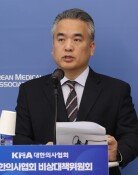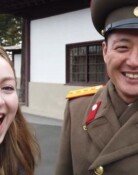Sales Soar for Childrens Books Written in a Combination of Korean and Chinese Characters
Sales Soar for Childrens Books Written in a Combination of Korean and Chinese Characters
Posted July. 12, 2004 22:31,

Men have forgotten this truth (眞理). But you must not (絶對) forget it. You become responsible (責任), forever (永遠), for what you have tamed. (from The Little Prince)
Ant, stop worrying about me. For I like music best (第一) in the whole world (世上). (from Aesops Fables)
Childrens books from the sixties? Not at all. These Chinese-cluttered books are all part of the latest slew of publications that target a young readership. They challenge the preconception that childrens reading should be free of Chinese characters (known as hanja in Korea), by including them in the text without even providing the Korean pronunciation for them.
Lee Mi-gyeong, who heads the childrens books department at Kyobo Book Centre, said, In the case of Aesops Fables, the edition that uses Chinese characters went on sale just last week, but weve seen a remarkably fast reaction from the readers. Word of mouth alone has already pushed sales up to an average of 15 copies a day.
Such books currently available in bookstores include Aesops Fables, The Talmud, Alice in Wonderland, and The Little Prince. They are all part of the series Classics Reread in Hanja published by Keunna Books. The four volumes are tailored for various age groups, and differ accordingly in the level of Chinese characters mixed in with Korean. Aesops Fables, which targets preschool and first- to third-grade students, includes Chinese characters used in the level-7 Hanja Proficiency Exam, whereas The Little Prince, aimed at fourth- to sixth-graders, uses level-5 characters.
Park Hwa-suk (38, Gunpo-si, Gyeonggi-do), a homemaker with children in third and fourth grades, explained, I have my kids read a chapter of The Talmud everyday, because I think it would be better for them to learn Chinese characters naturally in context than to study them separately.
The introduction of hanja-using childrens books coincides with the same trend that produced the bestselling educational comic book series Magical One Thousand Characters. With the recent growth of the Chinese economic bloc, interest for Chinese and hanja has been particularly high. More and more parents are eager to provide their children with instruction in hanja from an early age, and such books seem to reflect this rising interest.
Sue-Jean Kang sjkang@donga.com







